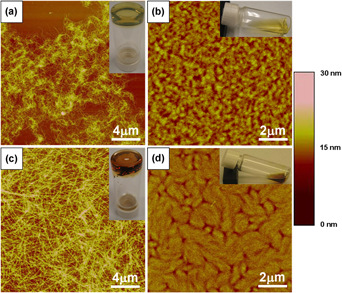Crossref Citations
This article has been cited by the following publications. This list is generated based on data provided by
Crossref.
Treier, Matthias
Liscio, Andrea
Mativetsky, Jeffrey M.
Kastler, Marcel
Müllen, Klaus
Palermo, Vincenzo
and
Samorì, Paolo
2012.
Photoconductive and supramolecularly engineered organic field-effect transistors based on fibres from donor–acceptor dyads.
Nanoscale,
Vol. 4,
Issue. 5,
p.
1677.
Kim, Yong‐Hoon
Yoo, Byungwook
Anthony, John E.
and
Park, Sung Kyu
2012.
Controlled Deposition of a High‐Performance Small‐Molecule Organic Single‐Crystal Transistor Array by Direct Ink‐Jet Printing.
Advanced Materials,
Vol. 24,
Issue. 4,
p.
497.
Arnold, Lena
Puniredd, Sreenivasa Reddy
von Malotki, Christian
Pisula, Wojciech
Koshino, Nobuyoshi
Higashimura, Hideyuki
Baumgarten, Martin
Wagner, Manfred
and
Müllen, Klaus
2012.
Fused π-extended discotic triangular porphyrinoids.
Journal of Porphyrins and Phthalocyanines,
Vol. 16,
Issue. 05n06,
p.
564.
Schenning, Albertus P.H.J.
and
González‐Rodríguez, David
2013.
Organic Nanomaterials.
p.
33.
Liang, Junfei
Zhong, Wenkai
Ying, Lei
Yang, Wei
Peng, Junbiao
and
Cao, Yong
2015.
The effects of solvent vapor annealing on the performance of blue polymer light-emitting diodes.
Organic Electronics,
Vol. 27,
Issue. ,
p.
1.
Gujral, Ankit
O’Hara, Kathryn A.
Toney, Michael F.
Chabinyc, Michael L.
and
Ediger, M.D.
2015.
Structural Characterization of Vapor-Deposited Glasses of an Organic Hole Transport Material with X-ray Scattering.
Chemistry of Materials,
Vol. 27,
Issue. 9,
p.
3341.
Yang, Hua
Qu, Kexin
Li, Haidong
Cheng, He
and
Zhang, Jidong
2016.
An In Situ Investigation into the Formation of the Solvent‐Induced Crystalline Phase of Poly(9,9‐Dioctylfluorene) in Solvent Vapor Annealing.
Macromolecular Chemistry and Physics,
Vol. 217,
Issue. 14,
p.
1579.
Panja, Santanu
Fuentes-Caparrós, Ana M.
Cross, Emily R.
Cavalcanti, Leide
and
Adams, Dave J.
2020.
Annealing Supramolecular Gels by a Reaction Relay.
Chemistry of Materials,
Vol. 32,
Issue. 12,
p.
5264.
Shi, Ying‐Li
and
Wang, Xue‐Dong
2021.
1D Organic Micro/Nanostructures for Photonics.
Advanced Functional Materials,
Vol. 31,
Issue. 7,
Panja, Santanu
and
Adams, Dave J.
2021.
Stimuli responsive dynamic transformations in supramolecular gels.
Chemical Society Reviews,
Vol. 50,
Issue. 8,
p.
5165.
